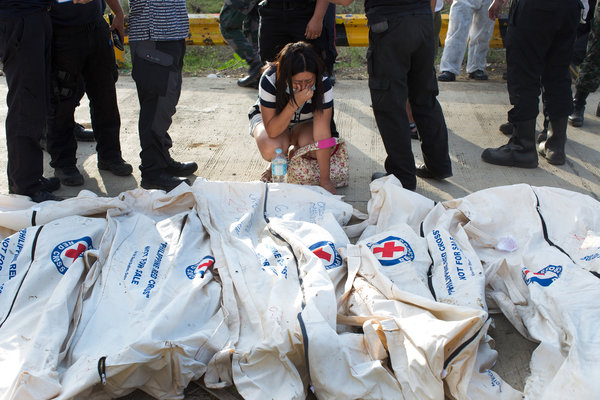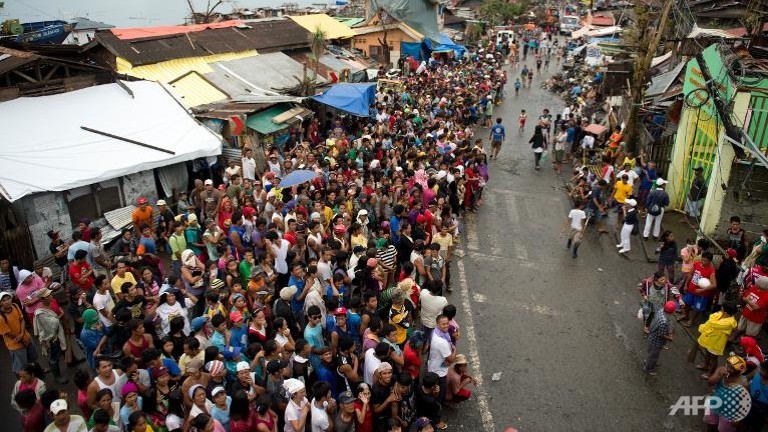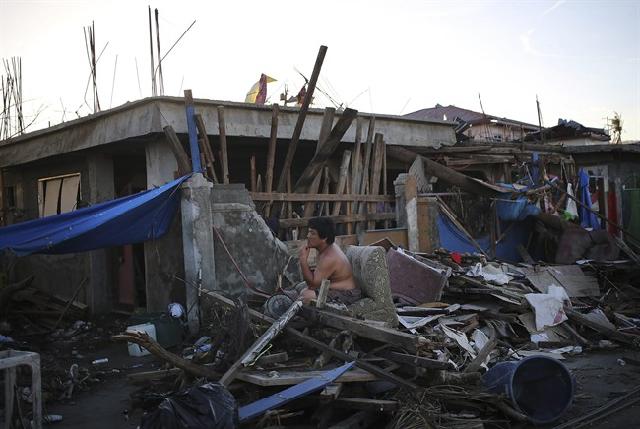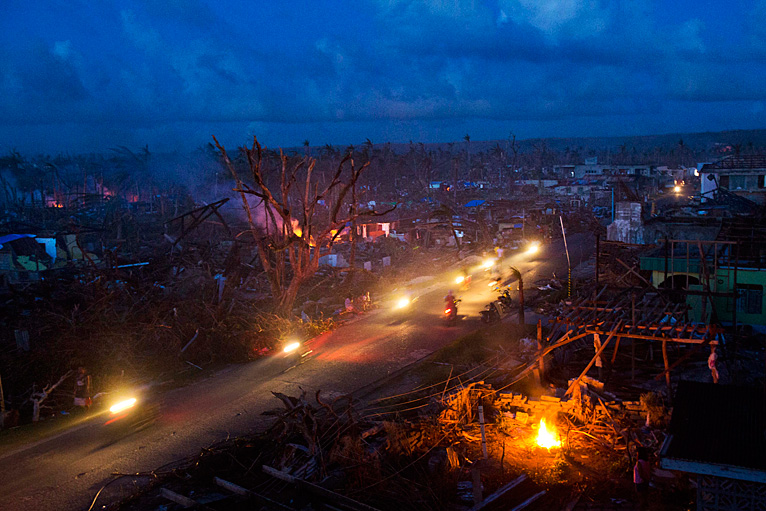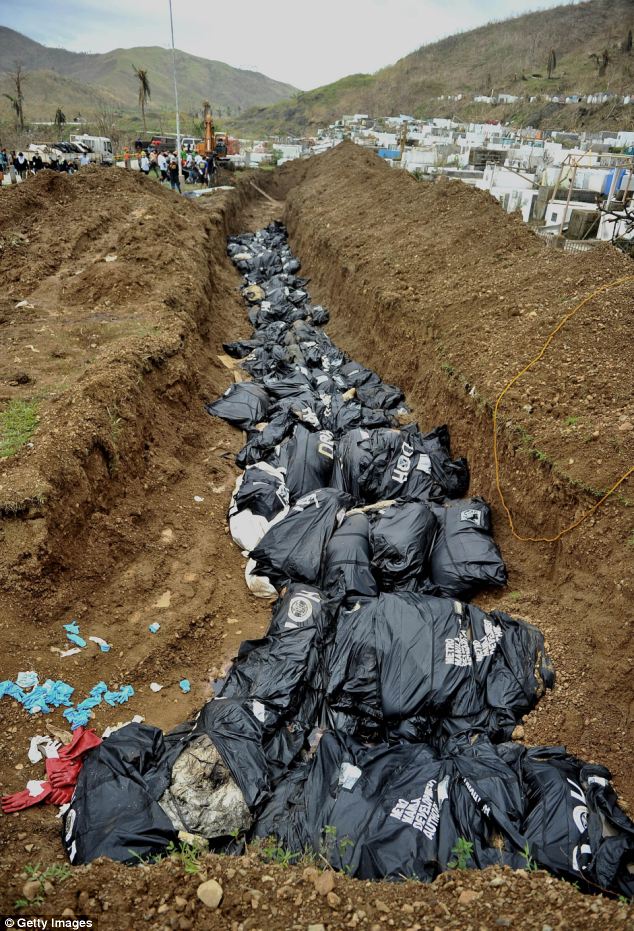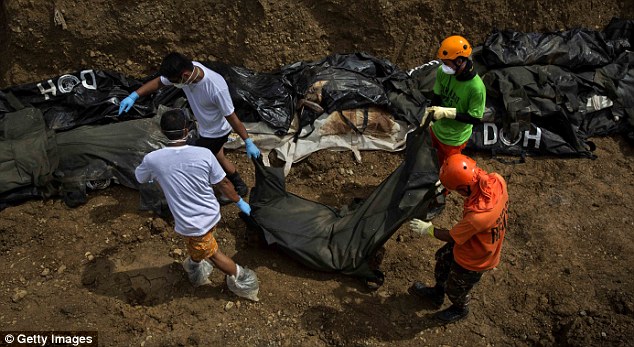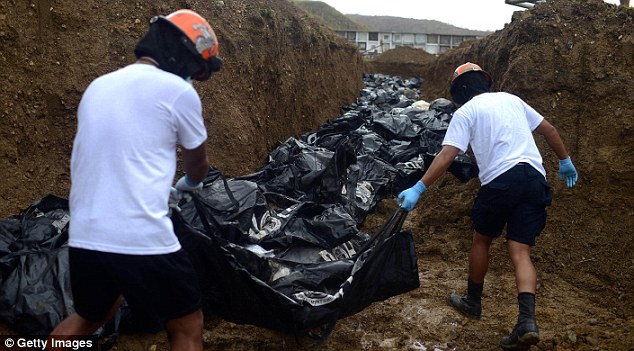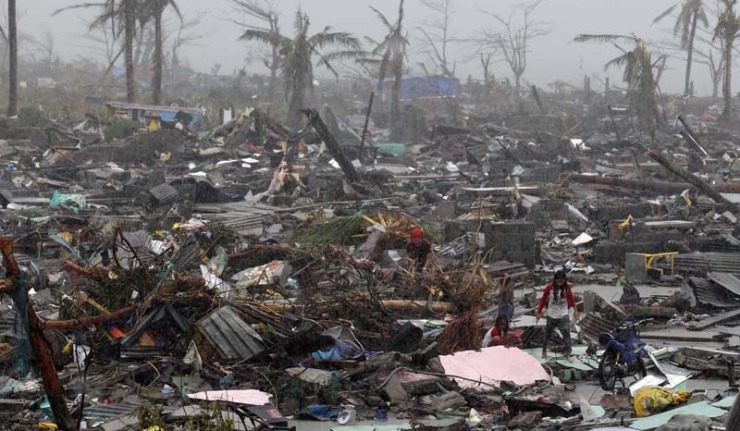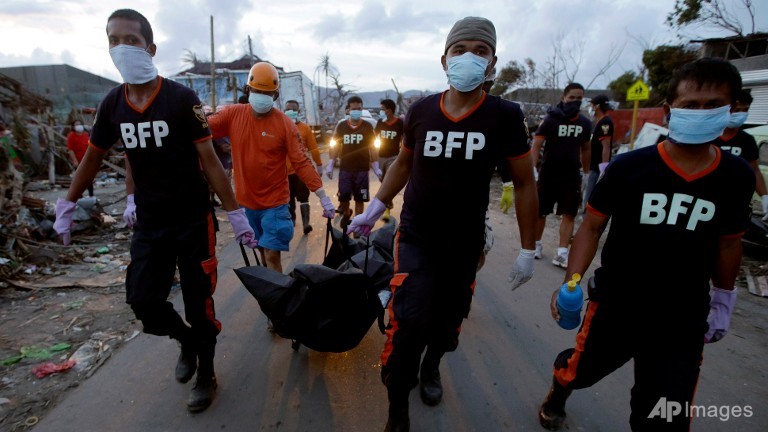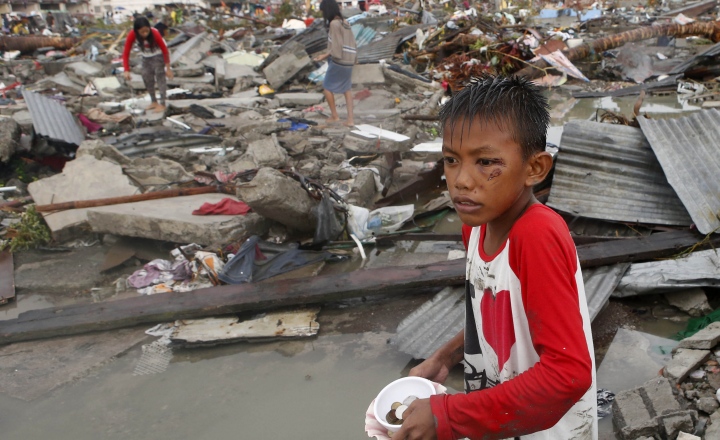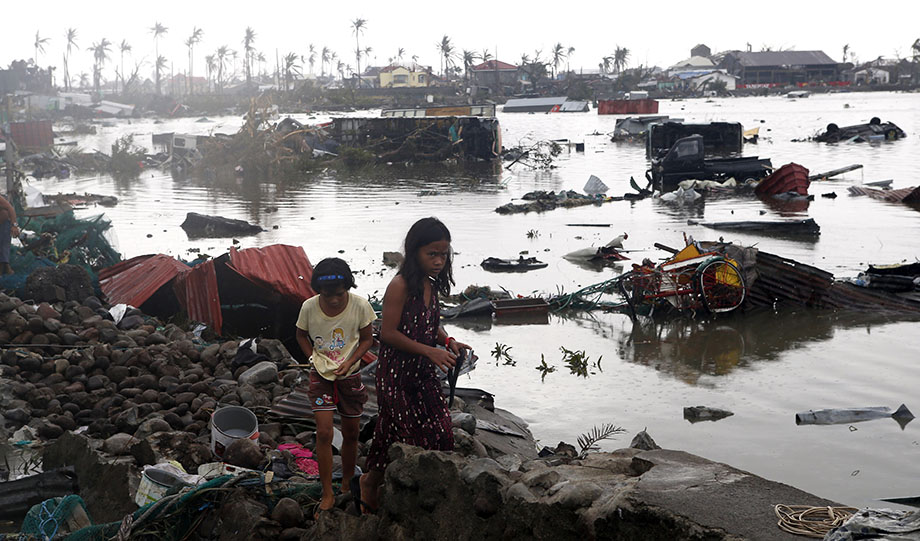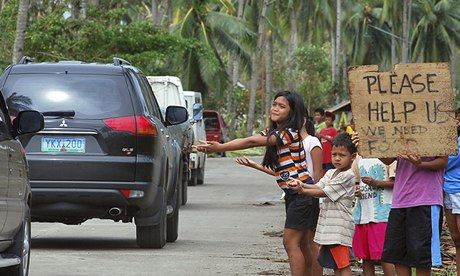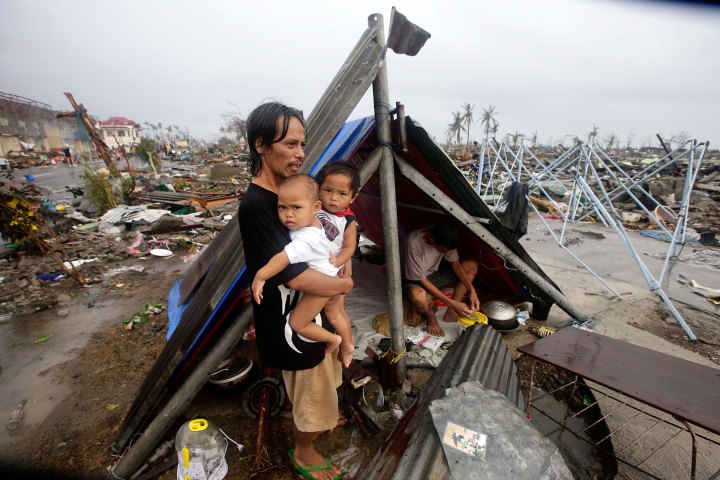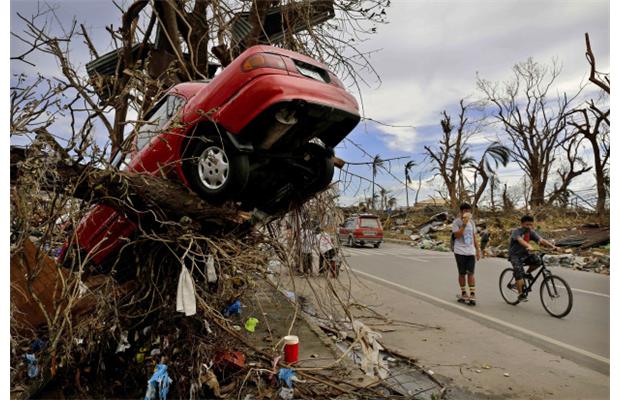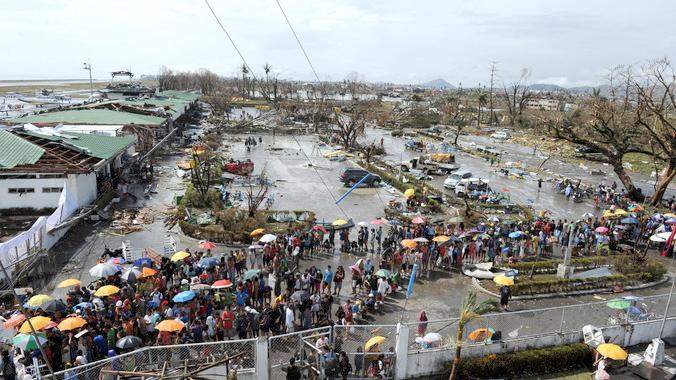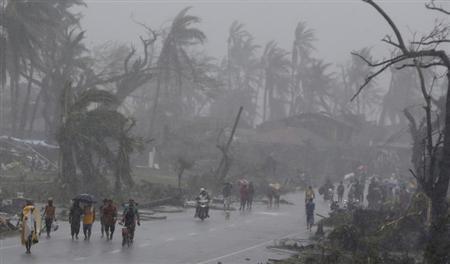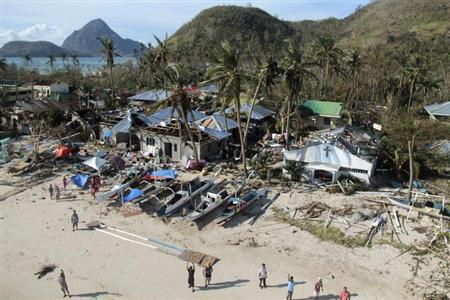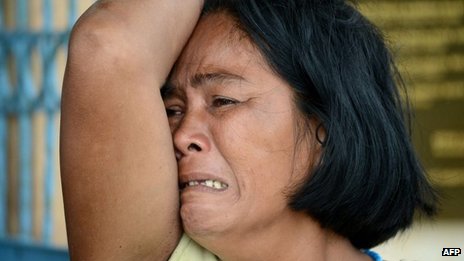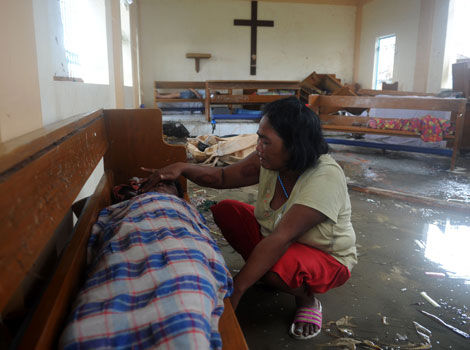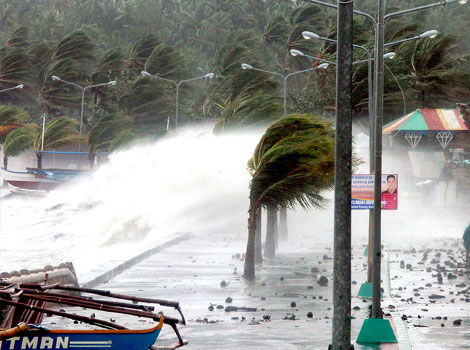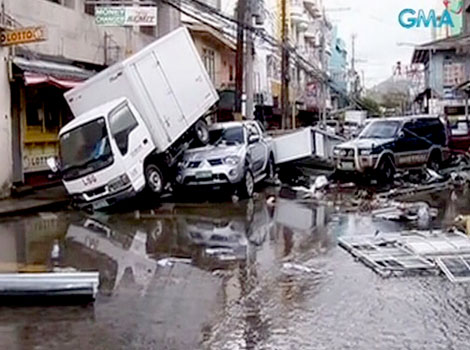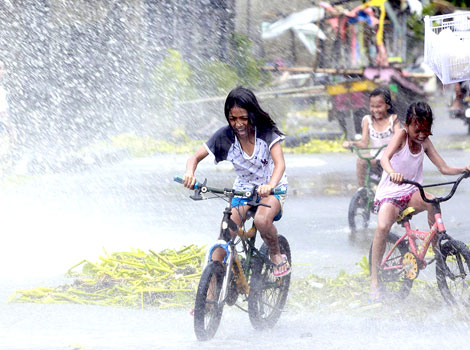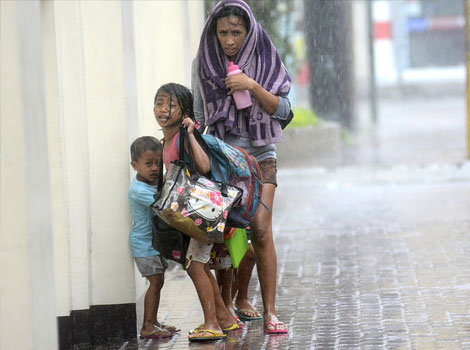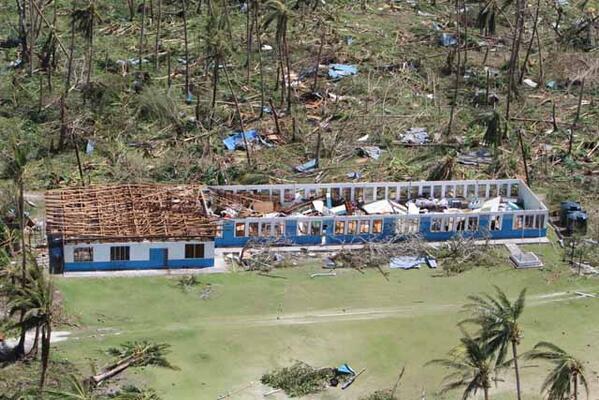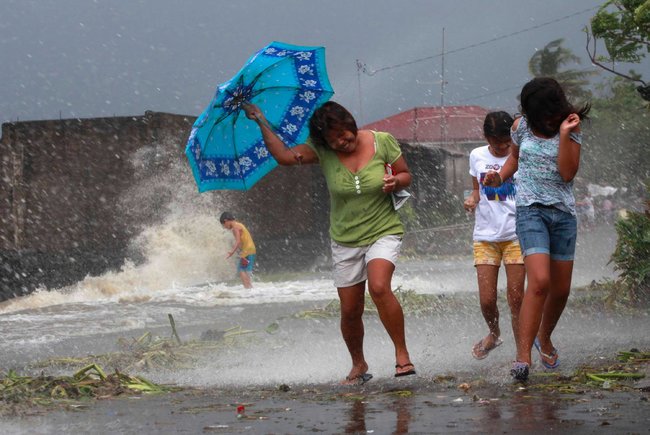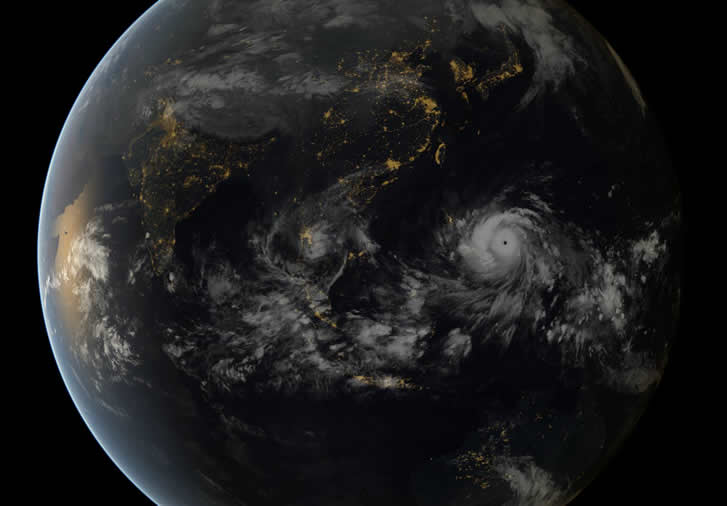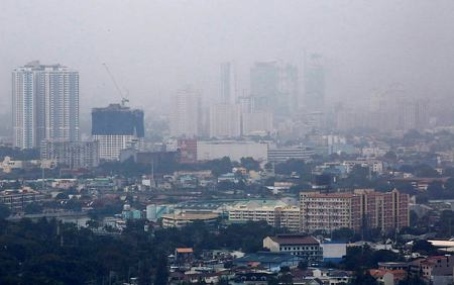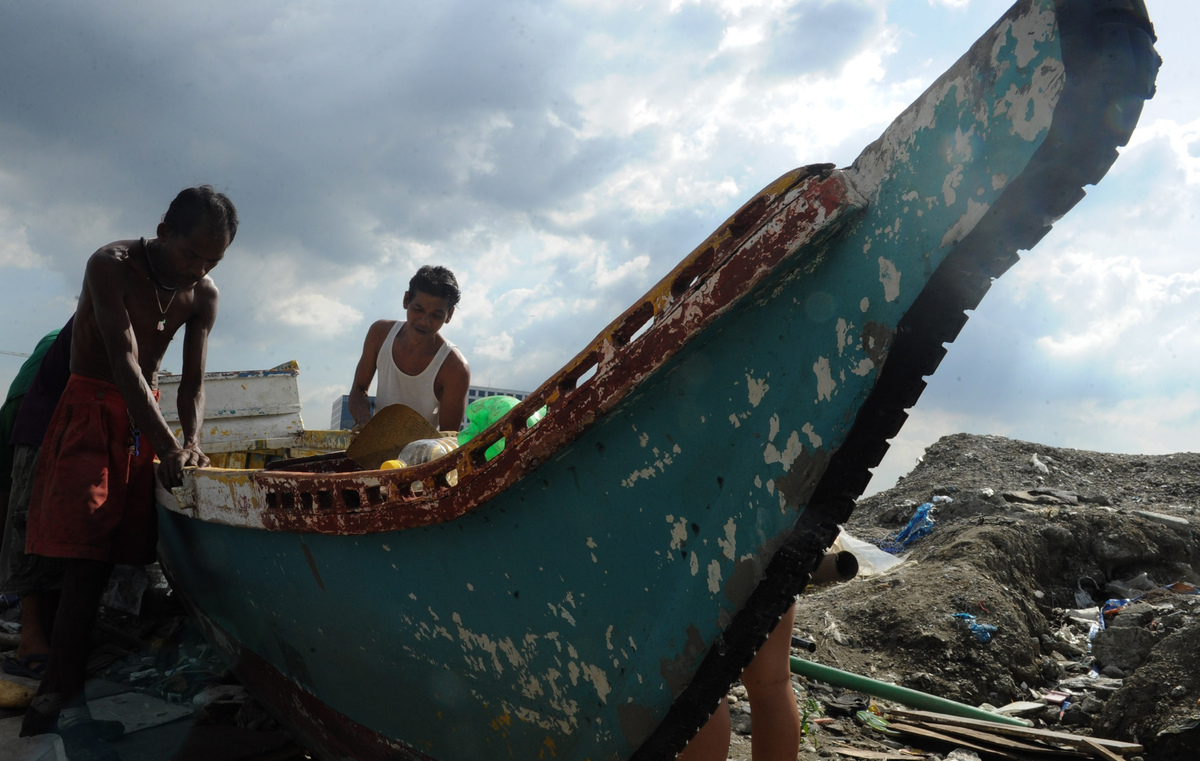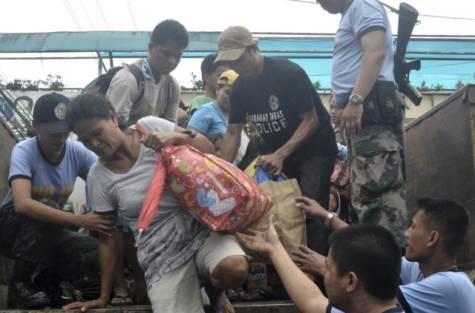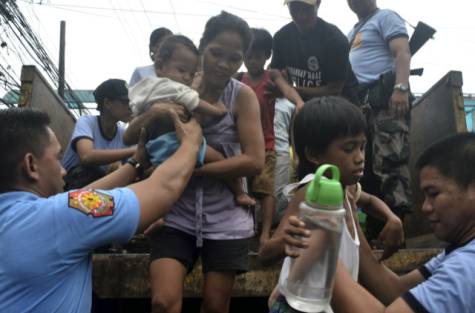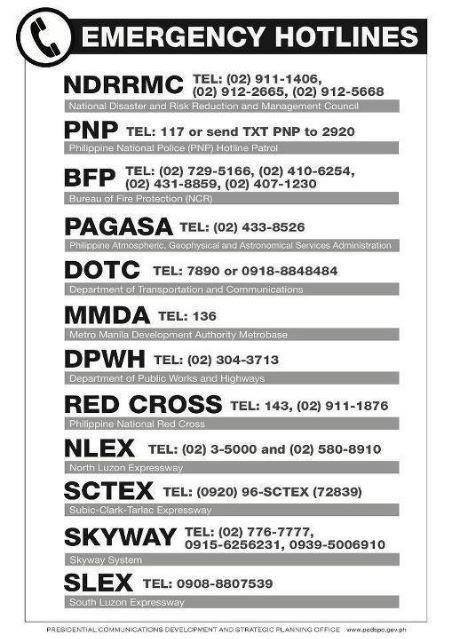Typhoon Haiyan: Search For Bodies Continue As Death Toll Raises To 7,000
The number of people dead or missing after one of the world's strongest typhoons struck the Philippines climbed towards 7,000 on Saturday, as the United Nations warned much more needed to be done to help desperate survivors.
Typhoon Haiyan raises the death toll in Philippines to 7,000
The number of people dead or missing after one of the world's strongest typhoons struck the Philippines climbed towards 7,000 on Saturday, as the United Nations warned much more needed to be done to help desperate survivors.
Mary Joy Ducusin cried over the body of her 6 year-old son, Jairo Ben Ducusin, next to a cemetery, outside Tacloban.
Image via nytimes.comThe government's confirmed death toll rose to 5,235, with another 1,613 people still missing more than two weeks after Super Typhoon Haiyan destroyed entire towns across a long stretch of islands in the central Philippines.
Victims of Super Typhoon Haiyan queue for food aid to be distributed in Tacloban on Nov 23, 2013. (AFP/Odd Andersen)
Image via channelnewsasia.comHundreds of bodies are still being retrieved from the rubble of Typhoon Haiyan, every day. For the volunteers who help with this, it is a grim but vital task.
Haiyan now rivals a 1976 tsunami on the southern island of Mindanao as the deadliest recorded natural disaster to strike the Philippines, which endures a never-ending battle against typhoons, earthquakes, floods and volcanic eruptions.
nytimes.comSigns Of Life Re-emerge In Haiyan Hit Philippine Zone As Aid Begins To Flow
Aid workers, heavy equipment and lifesaving supplies flowed into regions devastated by Typhoon Haiyan on Monday, as a global relief effort moved into high gear.
On the ground, there were further signs that battered communities were beginning to shift from survival mode to one of early recovery: markets were beginning to reopen, though with very limited wares, some gasoline stations were pumping and residents were repairing damaged homes or making temporary shelters out of the remains of their old ones.
halifaxcourier.co.uk"The darkest night is over but it's not yet 100 per cent," regional military commander Lt. Gen. Roy Deveraturda said.
The Nov. 8 typhoon killed or left missing more than 5,000 people and left 4 million displaced, requiring food, shelter and water.
Aftermath Of Typhoon Haiyan? The Chilling Sight Of 400 Bodies Buried In A Mass Grave.
Piled unceremoniously in an ugly trench, almost 400 bodies decay in the heat as they are arranged hastily in a mass grave.
dailymail.co.ukThe 393 corpses, most of which have not been identified, were piled four wide in tunnel excavated in a local cemetery in the storm-hit city.
ktla.comContained in little more than bin bags, the bodies show the scale of death visited upon the city by the unprecedented power of Typhoon Haiyan.
Fewer than 60 of those buried have been identified.
Officials in the city tallied deaths on a whiteboard, which stands at more than 4,000 in the country so far, topping a previous estimate that as few as 2,500 may have died.
Tacloban mayor Alfred Romualdez said many bodies would also have been swept out to sea and their bodies lost after a tsunami-like wall of seawater slammed into coastal areas.
One neighbourhood with a population of between 10,000 and 12,000 was now deserted, he added.
Mass Burial Cancelled As Angry Typhoon Haiyan Survivors Turn Violent
Gunfire forced the cancellation of a mass burial in the typhoon-ravaged Philippines Wednesday as authorities struggled to dispose of the dead, while anger among survivors at the slow trickle of aid turned deadly.
The United Nations estimates 10,000 people may have died in Tacloban alone, where five-metre (16-foot) waves flattened nearly everything in their path as they swept hundreds of metres across the low-lying land. (AP)
Image via ruvr.ruThousands of people jostled and begged for seats on scarce flights out of the ruined city of Tacloban, where putrefying corpses compounded a growing health menace after one of the strongest storms on record killed thousands.
indianexpress.comFiremen carry the body of a victim of Typhoon Haiyan in Tacloban, central Philippines. (AP/Dita Alangkara)
Image via channelnewsasia.comAttempts to bury some of the victims of Super Typhoon Haiyan suffered a setback when gunshots halted a convoy travelling towards a communal grave.
Typhoon Haiyan's Destruction In Pictures
Super Typhoon Haiyan Flattens Philippine City, Over 10,000 Feared Killed
One of the most powerful storms ever recorded killed at least 10,000 people in the central Philippines province of Leyte, a senior police official said on Sunday, with coastal towns and the regional capital devastated by huge waves.
Survivors walk on a road amidst heavy downpour after Typhoon Haiyan battered Tacloban city in central Philippines November 10, 2013.
Image via reutersmedia.netSuper typhoon Haiyan destroyed about 70 to 80 percent of the area in its path as it tore through the province on Friday, said chief superintendent Elmer Soria, a regional police director.
An aerial view shows damaged houses, as residents wave for help after Typhoon Haiyan hit a village in Panay island, in northern Iloilo Province, central Philippines November 9, 2013.
Image via reutersmedia.netMost of the deaths appear to have been caused by surging sea water strewn with debris that many described as similar to a tsunami, which levelled houses and drowned hundreds of people.
hindustantimes.comThe national government and disaster agency have not confirmed the latest estimate of deaths, a sharp increase from initial estimates on Saturday of at least 1,000 killed.
"We had a meeting last night with the governor and the other officials. The governor said, based on their estimate, 10,000 died," Soria told Reuters. "The devastation is so big."
Devastation In Pictures
A mother weeps beside the dead body of her son at a chapel in the aftermath of Super Typhoon Haiyan in Tacloban, eastern island of Leyte.
Image via hindustantimes.comA resident walks past high waves pounding the sea wall amidst strong winds as Typhoon Haiyan hit the city of Legaspi, Albay province, south of Manila. (AFP photo)
Image via hindustantimes.comPiled up vehicles are pictured on a flooded street filled with debris after Typhoon Haiyan hit the central Philippine city of Tacloban, Leyte province in this still image from video November 8, 2013. (Reuters)
Image via hindustantimes.comGirls ride on bicycles as they are splashed with water from strong waves in a coastal village as Typhoon Haiyan battered Bayog town in Los Banos, Laguna, south of Manila November 8, 2013. (Reuters)
Image via hindustantimes.comA mother takes refuge with her children as Typhoon Haiyan hits Cebu city, central Philippines.
Image via hindustantimes.comSuper Typhoon Haiyan Wrecks Havoc Across Philippines, Over 100 Feared Dead
A powerful typhoon ripped through the Philippines on Friday, killing more than 100 people in a city on Leyte Island, a Civil Aviation Authority official said on Saturday.
Victims’ bodies lay in the streets of the city, Tacloban, one of the hardest hit by the storm, Capt. John Andrews, the authority’s deputy director general, told The Associated Press.
nytimes.comMajor damage to JFK Elementary School on Kayangel Palau from Super Typhoon Haiyan impacting 14 students.
Image via twimg.comAlthough the storm had knocked out power and most communications, Captain Andrews said, his staff relayed news of the deaths. “The information is reliable,” he told the news service.
Strong winds from the typhoon hit a coastal town in Laguna Province. More than 700,000 evacuated ahead of the storm.
Image via nytimes.comThe storm, called Yolanda in the Philippines, moved across the country around 25 miles per hour, roughly twice as fast as Typhoon Bopha, which killed more than a thousand people last year, experts said.
High waves amid strong winds pounded the coast on Friday as a typhoon hit the city of Legaspi
The strongest typhoon in the world this year and possibly the most powerful ever to hit land battered the central Philippines on Friday
Super Typhoon Haiyan, the most powerful storm in the world this year, hit the Philippines today, as millions of people huddled indoors and business in vulnerable areas shut down.
Dark clouds hover over high rise buildings in Manila November 8, 2013, after typhoon Haiyan battered central Philippines on Friday.
Image via nst.com.myHaiyan smashed the into central island the island of Samar, about 600 kilometres southeast of Manila, at 4:40am (2040 GMT Thursday) and was travelling quickly northwest, state meteorologist Romeo Cajulis told AFP.
On Thursday, President Benigno Aquino had warned his countrymen to make all possible preparations for Haiyan
"To our local officials, your constituents are facing a serious peril. Let us do all we can while (Haiyan) has not yet hit land," Aquino said in a nationally televised address.
Philippine President Benigno Aquino III, left, talks about updates on powerful Typhoon Haiyan on national television at the Malacanang palace in Manila, Philippines on Thursday Nov. 7, 2013.
Image via gulfnews.com"We can minimise the effects of this typhoon if we help each other. Let us remain calm, especially in buying our primary needs, and in moving to safer places."
Fisherman repair there outrigger on the shore of Manila bay as Typhoon Haiyan approached on November 7, 2013. (JAY DIRECTO/AFP/Getty Images)
Image via huffpost.comAquino warned areas within the expected 600-kilometre typhoon front would be exposed to severe flooding as well as devastating winds, while coastal areas may see waves six metres (20 feet) high.
Haiyan was packing monster wind gusts of nearly 380 kilometres (235 miles) an hour as it approached the Philippines.
Among the 125,000 evacuated were thousands of residents of Bohol who had been camped in tents and makeshift shelters after last month's magnitude 7.2 earthquake
More than 125,000 people in the most vulnerable areas had been moved to evacuation centres before Haiyan hit, according to the civil defence office, and millions of others braced for the typhoon in their homes.
Residents living near the slopes of Mayon volcano are evacuated to public schools by police in anticipation of the powerful typhoon Haiyan that threatened Albay province and several provinces in central Philippines Thursday afternoon Nov.7, 2013.
Image via gulfnews.comAuthorities said schools in the storm's path were closed, ferry services suspended and fishermen ordered to secure their vessels.
In the capital of Manila, which was not directly in the typhoon's path but still expected to feel some of its impact, many schools were also closed.
Residents living near the slopes of Mayon volcano are evacuated to public schools by police in anticipation of the powerful typhoon Haiyan that threatened Albay province and several provinces in central Philippines Thursday afternoon Nov.7, 2013.
Image via gulfnews.comAn average of 20 major storms or typhoons, many of them deadly, batter the Philippines each year.
The developing country is particularly vulnerable because it is often the first major landmass for the storms after they build over the Pacific Ocean.
The Philippines suffered the world's strongest storm of 2012, when Typhoon Bopha left about 2,000 people dead or missing on the southern island of Mindanao.
No storm in the Atlantic has ever been stronger than Haiyan, according to The Weather Channel
Haiyan's wind strength made it one of the four most powerful typhoons ever recorded in the world, and the most intense to have made landfall, according to Jeff Masters, the director of meteorology at US-based Weather Underground.
Haiyan generated wind gusts of 379 kilometres an hour on Friday morning, according to the US Navy's Joint Typhoon Warning Center.
